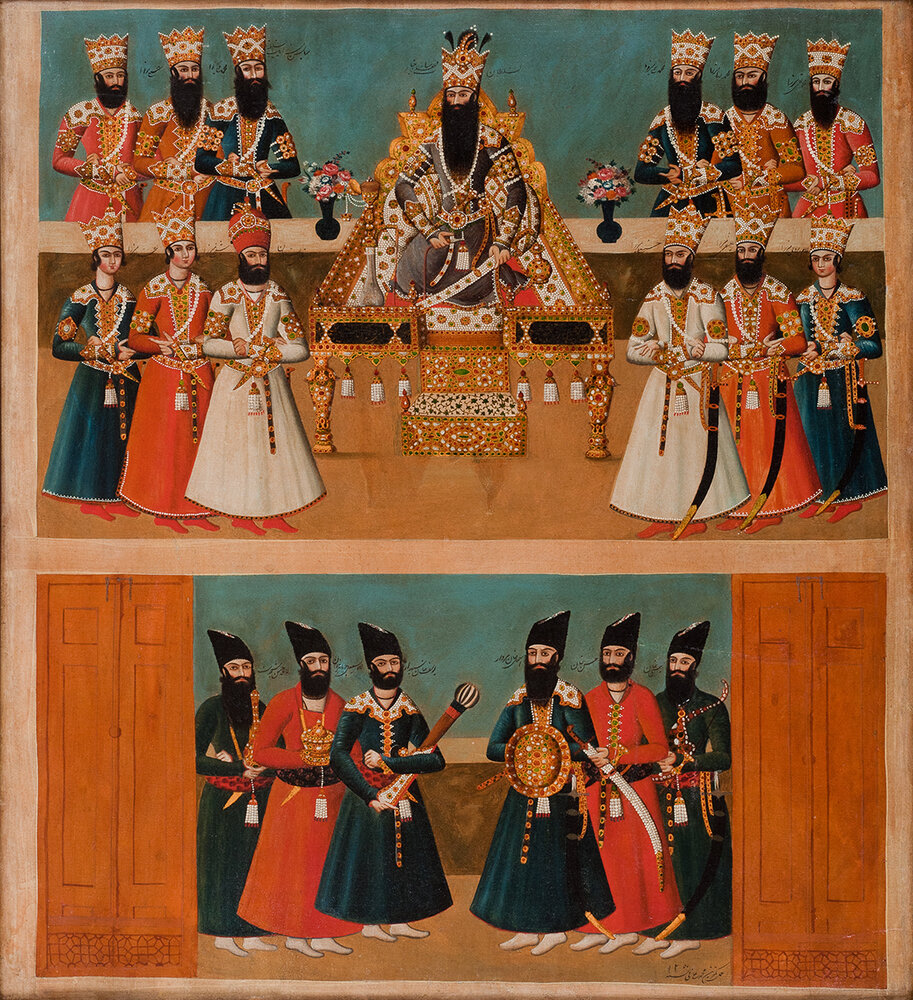Moscow State Museum of Oriental Art spotlights Qajar art

TEHRAN – An exhibition opening on May 15 at the State Museum of Oriental Art in Moscow will showcase a collection of artworks created during the Qajar dynasty that ruled in Iran from 1789 to 1925.
For the first time in Russia, more than 300 items from the richest Iranian collection of the museum, including paintings, ceramics, weapons, carpets and manuscripts, historical documents and photographs will be put on view at the exhibit entitled “Splendor of the Sunset: Iran of the Qajar Era”, the museum has announced.
The collection of Qajar art of the State Museum of the Oriental Art is one of the richest in the world, along with the Louvre, the Victoria and Albert Museum and the State Hermitage.
The exhibition aims to introduce a little-known page of Persian art and history, the museum said in its statement for the event, and added, “The rulers of Qajar dynasty came to power in the last quarter of the 18th century after a long and bloody internecine struggle.
“By the middle of the 19th century, they completed the reunification of the country but were unable to overcome its economic backwardness and resisted European colonial expansion.”
The statement called the Qajar period an era of decline from the former Iranian glory due to increased external pressure from Russia and Britain, the economic crisis, territorial losses and social tension within the country.
“European influence, technical innovations, reformist ideas and modern tastes penetrated the country, and the need for change and the importance of the education became obvious. But the inevitable influence of the West in the current international situation did not destroy the Iranian national spirit and loyalty to traditions.
“Two main trends in the culture of the Qajar era – an interest in modernization and European achievements and a worship of one’s own history, the glory of kings and mythological heroes of the past, created a new cultural model, where the archaic and the unexpectedly modern were closely intertwined.”
The State Archive of Russian Federation, the Marjani Foundation and the Kunstkamera, will contribute to the exhibition, which will showcase most of its objects for the first time.
The exhibition, which will run until July 25, explores different aspects of the life of Iranian society during the 19th and early 20th centuries.
In a press release published on Tuesday, the Iranian cultural attaché in Moscow, Qahraman Soleimani, elaborated on the exhibit.
“The Qajar era art has been regarded across the world over the past few decades,” he said and added that collections of artworks from this period have been put on display during exhibitions at the world’s great museums.
He noted that one of these exhibits was previously organized at the State Museum of Oriental Art during the 1970s.
The museum has always regarded Persian arts by organizing various exhibitions artworks from Iran.
The latest one was “Plots and Images of Nezami”, which was held from March 11 to May 3. Artworks inspired by Nezami Ganjavi, the Persian poet who lived during the 12th and early 13th centuries, were exhibited at the showcase.
Photo: Qajar ruler Fathali Shah and his ministers are depicted in a painting by Mohammad-Ali Beik Naqqashbashi, which is preserved at the State Museum of Oriental Art in Moscow, Russia.
MMS/YAW
